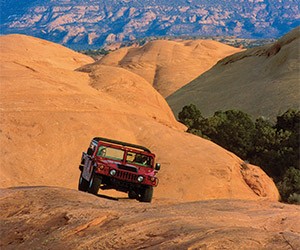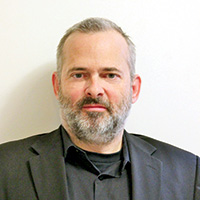Opened in 1916, the Utah State Capitol in Salt Lake City celebrates its centennial this year. Along with offering guided tours, this majestic building, modeled after the Capitol in Washington, D.C., is among the city’s most popular event destinations.
Rental spaces include the Rotunda, site of the Capitol’s dedication in 1916 and again in 2008 following a sweeping four-year renovation. Hosting up to 2,500 people for events, this prestigious space is complemented by the Hall of Governors, accommodating 2,300 guests, along with the Capitol Board Room and conference rooms for smaller gatherings. The sprawling grounds, including the North Plaza and East Plaza, provide even more options for dramatic large-scale gatherings.
One of the most recognizable and prominent landmarks in the city and the state, the Capitol symbolizes the trove of historic and heritage venues available to groups around Utah. From the age of the dinosaurs to Brigham Young’s arrival in the Salt Lake Valley in 1847, Utah is prime territory for groups to create classic memories of their own.
Above the Salt
Utah achieved statehood in 1896, which is around when its capital, Salt Lake City, began assuming its present shape and character. Just as Brigham Young declared “This is the place” upon discovering the site of the future city and its inspiring mountain-backed surroundings, delegates are tapping into a destination built on vision, purpose and determination.
“Salt Lake’s rich history appeals to many of our visitors, both meeting attendees and leisure travelers alike,” says Scott Beck, president & CEO of Visit Salt Lake. “While most people know that Salt Lake was founded by the Mormon pioneers and remains the worldwide headquarters of that church, many may not realize the scope of cultural diversity tied to many other historical moments. These include the completion of the Transcontinental Railroad just north of the city, which shaped our community along with Utah and the West itself, while also bringing thousands of immigrant workers of numerous nationalities who put down roots across the state.”
With much of the Utah experience tied to the Mormon Church (officially, The Church of Jesus Christ of Latter-day Saints), a must visit is Temple Square, the church’s worldwide headquarters. Featuring many historical buildings on its immaculate grounds, the significance of this breathtaking structure is akin to the Vatican in Rome.
Similar to Colonial Williamsburg, This Is the Place Heritage Park showcases life during Utah’s early settlement. Located at the mouth of Emigration Canyon, where the Mormon settlers first entered the Salt Lake Valley, the park routinely hosts meetings, conferences, banquets and events.
Named for the imported fruit-bearing trees planted in its streets, Marmalade Hill Historic District, on the western side of Capitol Hill, features many original pioneer-era homes. Next to the Capitol is the Pioneer Memorial Museum, which features the world’s largest collection of Utah pioneer artifacts. History also comes alive at Utah State Fair Park, site of the first state fair just nine years after the first pioneers arrived.
Surprisingly, Utah is one of only two states in the nation without a comprehensive state history or heritage museum. Yet, discussions are underway for the creation of such a venue in Salt Lake City.
“We are actively exploring the feasibility of a Utah Museum of History, Heritage & Art, including gauging potential public and private support for such a venture,” says Josh Loftin, communications director for the Utah Department of Heritage & Arts.
Folk art traditions practiced by Utah’s multicultural communities and exhibits, including hand-forged tools and cowboy gear, are among the draws at the Chase Home Museum of Utah Folk Arts, housed in a 150-year-old home in the heart of Liberty Park.
PageBreak
The still-golden afterglow of the 2002 Winter Olympics and the shine of its silver mining boom from the 1860s to 1930s define the heritage draws in Park City. These legacies are celebrated at the newly renovated Park City Museum, just one of the 200-plus venues lining Historic Main Street. Located within Utah Olympic Park, the Alf Engen Ski Museum showcases Utah’s ski heritage from the 1800s through the 2002 Olympics. Groups can also harness the legacy of the games at various event-capable venues at Olympic Park.
Remains of the Day
The story of seekers and settlers continues in the mountainous Utah Valley region south of Salt Lake City. Originally home of the Ute Indians, this scenic area, with Provo as its main base, once attracted Spanish explorers, fur trappers and pioneers emigrating to the West. Named after French fur trapper Etienne Provost, Provo features a rich collection of historic architecture, ideal for self-guided walking tours. The city is also home to Brigham Young University, where group-accessible venues include the BYU Museum of Paleontology, a cutting-edge center of dinosaur science, and BYU’s Museum of Peoples and Cultures.
West of Provo on the other side of Utah Lake in Fairfield is Camp Floyd/Stagecoach Inn State Park and Museum. Commemorating the site where soldiers, Mormon pioneers, stagecoach travelers and the Pony Express once converged, Camp Floyd housed a U.S. Army deployment from 1858 to 1861 to suppress a supposed Mormon rebellion, before the soldiers were summoned for the Civil War. Programs include the annual Memorial Day Civil War Encampment and guided ghost tours.
Halfway between Provo and Salt Lake City in Lehi, the event-capable North American Museum of Ancient Life houses one of the world’s largest dinosaur collections.
Yet more evocative history beckons north of Salt Lake City in Ogden. “Hail to the Highway of the Nations! Utah bids you welcome” proclaimed the banners that flew here in 1869 when the first locomotive of the Transcontinental Railroad steamed into Union Station.
The depot served as the junction for railroad travel in the Intermountain West for several decades, as Ogden became notorious for gangs, brothels and other decidedly non-Mormon activities. Today, Union Station anchors lively Historic 25th Street, or “H25.” The former depot houses the Utah State Railroad Museum, John M. Browning Firearms Museum, Browning–Kimball Classic Car Museum and Utah Cowboy and Western Heritage Museum.
Groups also have Peery’s Egyptian Theater. Built in 1924, this 800-seat gem has been renovated to serve as a state-of-the-art performance venue and centerpiece of the Ogden Eccles Conference Center.
In southern Utah, Cedar City is home to the Frontier Homestead State Park Museum, a living history museum that displays mining equipment, horse-drawn wagons, historic buildings and a Paiute native camp.
Offering “everything from A to Zion (National Park)”, the St. George area features a historic main street and attractions such as the tour-capable home of Jacob Hamblin, who played an integral role in smoothing relations between Indians and Mormon settlers throughout the West.
The former uranium mining center of Moab serves as a gateway to both Arches and Canyonlands national parks, two of the world’s most spectacular ancient natural treasures.







